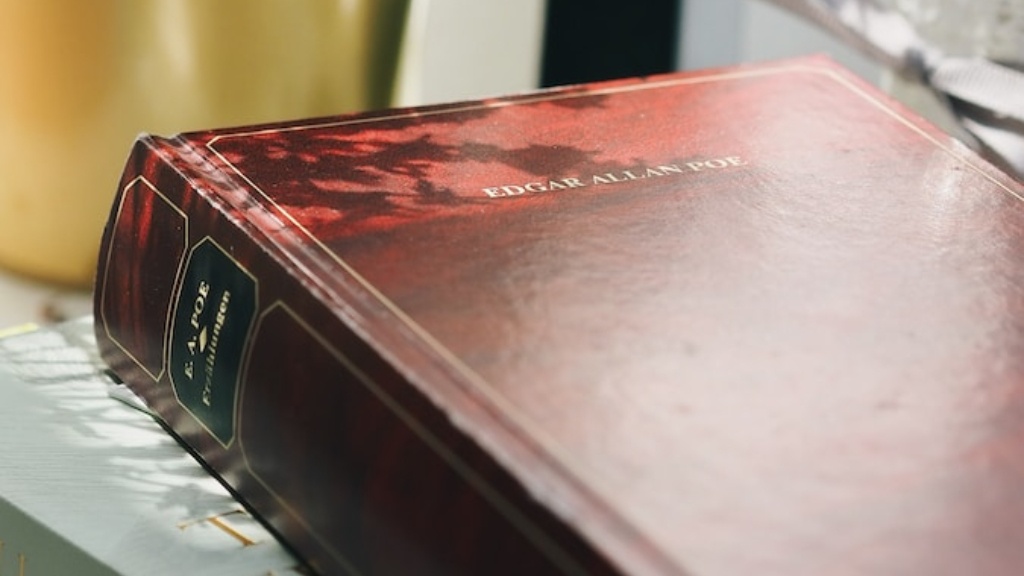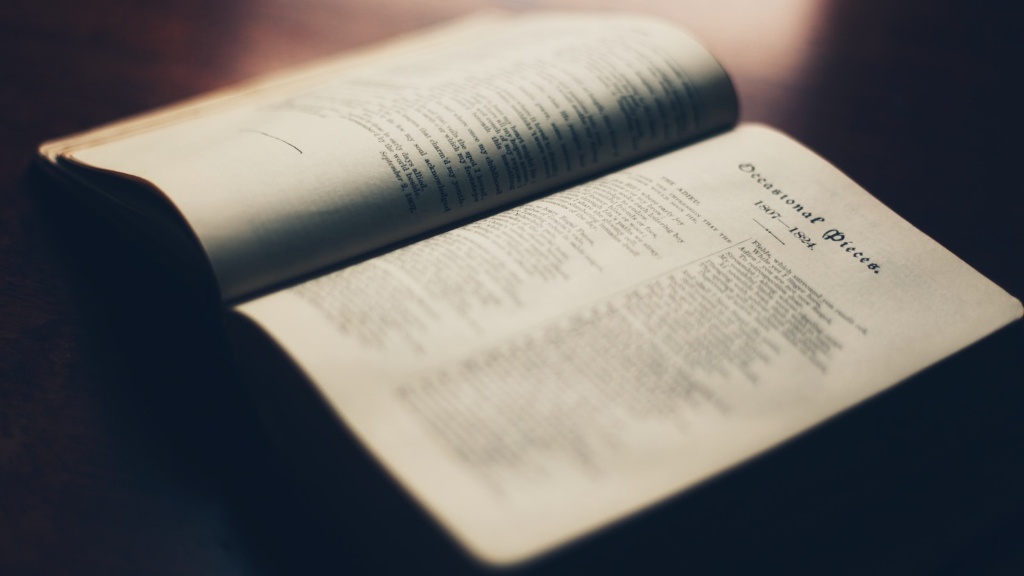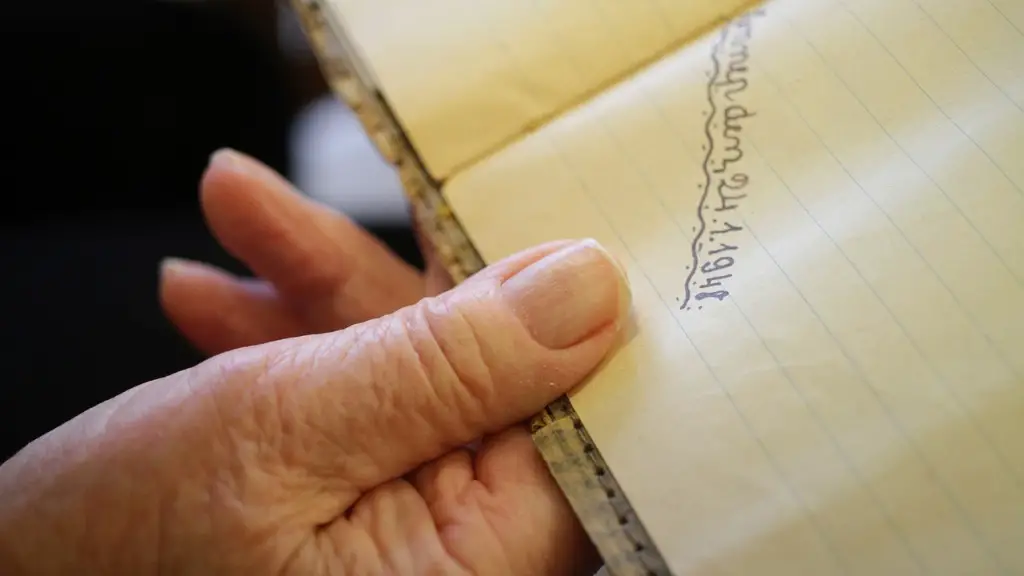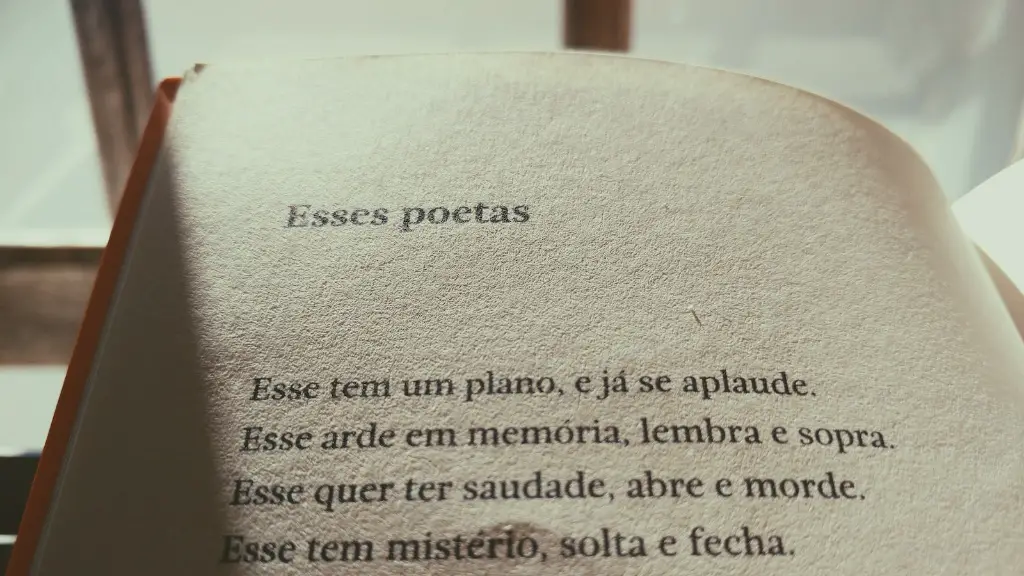What is the Definition of Mood in Poetry?
Mood is an integral component of a poem’s message and meaning. It is a feeling or atmosphere that the author creates in order to facilitate an emotional response in the readers. Mood helps the reader to empathize with the poem and understand the message that the poet is trying to convey. It can be invoked in various ways, including word choice, subject, tone, setting, and imagery. To define the mood in a poem is to understand the resonating feeling throughout the work.
The emotions evoked by a poem can be classified into two main categories: positive and negative. Positive emotions can include joy, elation, and hope, while negative emotions might involve fear, sadness, and anxiety. In addition, a poem’s mood can be less extreme and instead be described as tranquil, calm or thoughtful. The poet is ultimately the one who creates the mood through the words or combination of words used. Through their choice of words, the poet is able to elicit certain emotions in a reader.
The language used in each poem helps to create a unique atmosphere. Words can speak to the senses of the reader in a variety of ways. By using descriptive language, poets can evoke sensory responses in their readers. Similarly, symbolism is also used to create deeper meaning in poetry. Symbols and metaphors can be used to help the reader to experience a certain feeling in the poem.
In addition to the words and metaphors used, the form of the poem will help to create the mood. Various poetic forms such as sonnets and ballads have different characteristics that can create different moods. Vocabulary, rhythm and structure are all key elements of the poem that can contribute to the overall feeling of the work. The poem’s length can also have an effect on its mood; short, succinct poems can create an intense atmosphere, while long, drawn-out poems can create a feeling of contemplation or nostalgia.
The mood created in a poem may range from despondence to joy or some combination of both. Ultimately, the mood will be dependent on the words chosen by the poet. Any reader who wants to understand the full scope of a poem can look to the mood as a primary source of information. Understanding the resonance of the work is one of the best ways to discover its hidden meaning.
Mood in Greek Mythology
The use of mood to evoke emotion has been a part of storytelling since ancient times. One such example is the utilization of mood in Greek mythology. In myth, the deities and story characters are often employed to express mood in order to build a sympathetic connection between the reader and the story. The characters often have supernatural abilities, and as such can be used to invoke moods that can’t be expressed through normal human expressions of emotion.
A good example of this is the way that the gods can bring chaos or order in the stories. When a deity appears and confounds the characters, the readers feel the tension that the characters are feeling and are connected to the situation. Similarly, when a god appears to restore balance the readers feel a sense of peace and hope. The occurrence of both chaos and balance create a mood of determination and strength.
In the myth of Psyche and Eros, the story has a distinct mood determined solely by the emotions of the gods. In this story, the gods display sadness, jealousy and anger, creating a mood of underlying tension and instability. The gods in this story use their emotions to evoke the feeling of love lost, betrayal and despair in the story’s characters as well as its readers.
Mood in Romantic Poetry
Romantic poetry was a literary movement that originated in the late 18th century. This style of poetry was known for its sensitivity and its expression of emotion. Poets such as William Wordsworth and Percy Bysshe Shelley were renowned for tapping into their emotions to create works that expressed their innermost feelings. They often expressed deep, intense emotions such as sadness, love, longing and despair.
In “Ode to a Nightingale” by John Keats, the mood created is one of wistful sadness. Throughout the poem, the nightingale is used as a metaphor for the fleeting nature of life and our passing moments of joy. The poem conveys a sense of longing and despair that resonates with the readers. The use of imagery, such as the gardens and the moon, evokes feelings of melancholy and nostalgia. The mood of the poem is one of sorrow and reflection, prompting readers to contemplate the temporary nature of life.
In “The Rime of the Ancient Mariner”, by Samuel Taylor Coleridge, the reader is taken on a journey with the mariner as he comes to terms with his isolation and the moral implications of his actions. The mood of the poem is one of regret and guilt, as the mariner suffers for his sins. The poem is also tinged with a sense of mystery and dread, as the mariner’s story takes him into unknown waters. The use of imagery and rhythm adds to the poem’s overall feeling of darkness and solitude.
Mood in Modern Poetry
Modern poetry is known for audacious language, complex imagery and genre-defying structures. Poets today often challenge societal norms and conventions in order to express their feelings and reactions to the world they live in. The themes and styles of modern poetry can be diverse in their subject matter and message, but they also have the capability of creating a particular atmosphere which resonates with their audience.
In “The Tyger” by William Blake, the poem is tinged with a sense of awe, reverence and mystery. The poet captures the spirit of wonder and amazement that one can experience in the presence of a wild animal. The language used in the poem is meant to invoke emotion, with repetition and questions used to drive home the power of the creature being described. The overarching mood of the poem is one of admiration and awe.
In “Still I Rise” by Maya Angelou, a feeling of resilience and hope is expressed. Through the use of vivid imagery and the repetition of powerful language, the poet is able to create a powerful atmosphere that speaks to the strength of the human spirit and our ability to overcome adversity. The poem echoes with a sense of defiance, as the narrator refuses to be defeated or put down.
In “Harlem” by Langston Hughes, the mood is one of longing and sadness. The poem focuses on the fantasies and dreams of a people who felt disempowered in their own society. The use of imagery and symbolism allows the reader to feel the same sense of hopelessness as the characters. The poem paints a vivid picture of loss and destitution, inviting readers to empathize with the narrator and their plight.
Mood in Visual Art
Mood is also commonly used in visual art, to evoke emotional responses from the viewer. In artwork, the audience will be impacted by the tone of the piece. This can be a mixture of colors, shapes and other features that come together to create a particular atmosphere or feeling in the composition.
Lighting is also used to create a certain mood in artworks. In painting, a piece may be bathed in bright colors to reflect joy and happiness or shrouded in darkness to convey a sense of mourning and despair. Similarly, in sculpture, negative space can be used to emphasize a certain emotion or atmosphere. By employing the principles of mood, artists can be sure that their art will elicit emotion in viewers.
In photography, the mood can be created by more than just the subject being captured. After the photo has been taken, the photographer can edit and alter the picture in order to create a certain mood or atmosphere. This can also be done before the photograph is taken, by selecting the proper settings, colors and light.
Mood in Music
Finally, music is one of the most powerful ways to express mood. Through the use of melody, rhythm and instruments, musicians can evoke emotions in listeners in profound ways. Different combinations of notes and chords can create feelings of joy and excitement or sadness and desperation. Music can also be used to create atmosphere, by manipulating the tempo and sound of the composition.
Similarly, the lyrics that accompany music can play an important role in the way a particular song makes us feel. The words that are used by the vocalist can be used to create feelings of nostalgia, joy, sorrow and other emotions. The best musicians are able to combine their music with appropriate lyrics to create something that speaks directly to our hearts.
Conclusion
Mood is an integral part of poetry, art, music and literature. It is a feeling or atmosphere that the artist can create to engage the viewer or reader in a certain way. The artist does this by making use of colors, scenes, instruments and words to evoke emotion. The mood can range from joy to fear, and can be a powerful tool for creating connections between characters and readers alike.





